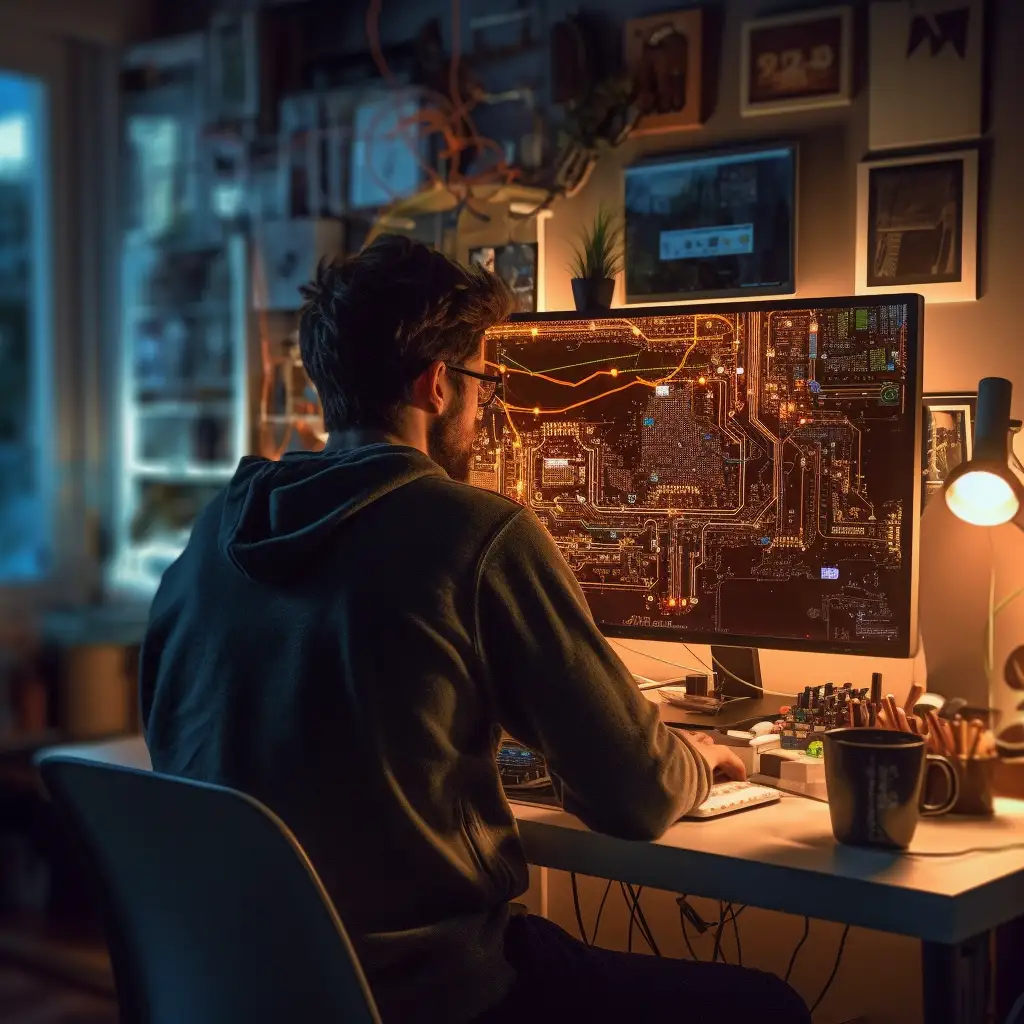
Our Experience with Hardware Product Life Cycle
Check the article about our long-term experiences with the workflow during hardware development.
For the product development for huge customers or corporations, where we participate as a contributor, we follow the customer's processes. For the demonstrator and prototype development, we follow this flow.
Concept
- Block Diagram
- Component selection
- Feasibility study
Aim Is to Gain Confidence That Further Investment Will Lead to Marketable product
The concept phase is often the most important and neglected in product design. It takes experience to hold back and not jump straight into coding or schematics design.
In this phase, we delve into a detailed discussion with the customers and work on a detailed requirement analysis. Several teams join and share their points of view about the specification. The output of the concept phase depends on the input. If the input is just a napkin drawing, Consilia prepares the System/Product specification. In cases where such a document already exists, we create a block diagram of a proposed solution and recommend a target technology.
Sometimes we deal with projects that are specific or require the usage of experimental and/or cutting-edge technology where only engineering samples are available. In these cases, we conduct a feasibility study where we evaluate the technology, test components parameters, analyze the power/link budget, or simulate the key blocks of the envisaged solution. The aim is to gain confidence that further investment will lead to a marketable product.
Design
- Simulation
- Circuit design
- Schematic Capture
- PCB Layout
- 3D model
- Component procurement
- PCB prototype
- PCB Prototype assembly
- PCB Mounting
- Hardware Box Design
Prepared production data is a crutial milestone of the project. It is the task of this phase.
The design phase is the second most analytical phase of product development. It is characterized by an intense collaboration among all teams.
In many cases, the hardware team is the team around which the whole project development turns around. One leg collaborates tightly with the System designer and discusses the selection and interconnection of peripherals and building blocks.
At the same time, the peripherals are assessed from the SW point of view and checked whether the existing driver support and overall architecture fulfill the customer requirements, especially the project plan.
The third contributing part is the mechanical team. Mechanical limitations, component placement restrictions, and manufacturing constraints are considered. In certain products, heat dissipation is the most critical part of the design. In these cases, we extend our teams with third-party thermal engineers and conduct thermal analyses. Regular, iterative meetings with all involved parties move the project forward.
Consilia prides itself on being an excellent collaborator and integrator. We are used to working with many teams across different time zones. Working with remote teams had been our daily bread for years before lockdowns hit society. Based on our customer testimonials, working with us is often smoother than working with colleagues sitting in the next cubicle.
The output of the design phase is the delivery of manufacturing data. This is the most common milestone in the project plan. Consilia treats its customers as project owners. During the data handover, we deliver the source data for schematics and PCB, PCB manufacturing data, PCB assembly data, and a 3D model of the product. For RF or high-power products, we also deliver milling specifications for shielding boxes and heatsinks.
Test and Verification
- 3D prototype
- Test and Debug
- Verification
- Packing Box Prototype
Right now, we are going to find out how we did on the assignment.
The quintessential picture of a hardware engineer is a middle-aged man in an ironed white coat probing a board and observing a screen of an expensive-looking piece of measurement equipment.
Test and verification are, in many aspects, the pinnacle of product development. In this phase, the prototype is being measured. It is an exciting period when all teams are gathered and, step by step, bring up their prototype. SW and HW teams check the functional blocks. And the HW and mechanical team check the fitting of the product in the enclosure. Measured parameters are compared against simulation and product specifications. The output is a detailed Test and verification report where all the measurements are documented, and the customer can easily see with which margin we fulfilled the product specification.
Consilia does not own a prototype production facility. We use our extensive network of PCB manufacturers and assembly houses that can produce from units to hundreds of prototypes. We always aim to have only one spin. However, experience shows that many times a second spin is required. The first spin of prototypes is usually produced in units. The second spins, when the confidence is gained and the bugs from the first spin are fixed, are made in tens to hundreds of prototypes.
Manufacture
- Design to Manufacture
- Design to testability
- BOM Cost Optimization
- PCB manufacturing
- PCB Assembly
- Documentation
- Production line testers
The first step toward reliable high-yield manufacturing is accurate data.
Before we release the data, we run a DFM (Design for Manufacturing) analysis on each board. The analysis is conducted on the PCB data and run by the PCB manufacturer. Before manufacturing, we also share the data with the target assembly house to ensure that their assembly machines are well suited for the board, and if necessary, we modify the boards to make sure that we avoid any potential risk of poor assembly. For high-reliability boards, where the customer knows in advance what kind of tests are planned to be run on the target, we participate in DFT, Design for Testability, and analysis. This analysis aims to ensure that the design team has made all provisions that the whole board is testable by ICT (In-Circuit Test) testers, or functional testers.
Consilia is a design house. Our output is a working prototype with running firmware plus a control application if necessary. The customer owns the complete production documentation and the intellectual property for the firmware/software. And although we do not have any manufacturing facility, we have a lot of experience with product launches. Our engineers are often present during the manufacturing of the first products coming from the assembly line and help tune the process.
An inextricable part of the manufacturing process is testing. The manufacturing site covers essential circuit testers and flying probes; still, deep knowledge of products is required for functional testers. The product development team is often the best team to design a production line tester, and Consilia actively participates in this process. A common part of product deliverables is a test description. However, we do not stop here. We own a share in a tester developing factory, and we can design and provide production line testers for our products or third-party products.
Lifetime Support
- EOL and obsolescence mitigation
- BOM maintenance and replacement support
Despite everything we do to extend the life of a product, there comes a time when some components need to be replaced.
Consilia feels responsibility for the developed products.Throughout the design, we do our best to select the components with a long expected lifetime and are confirmed to be available on the market for the planned lifetime of the product. We regularly update our database of design components with flags that mark the obsolete components. Despite all our effort, it happens occasionally that some components become obsolete. Primarily due to natural disasters that hit the component manufacturers. In such cases, we either recommend a replacement or work with the assembly houses and assess proposed second sources.
Next Interesting Topics

A Different Way of Working from Home
PCB designer from Consilia works from his garden house. The walk from his family house takes just about 10 seconds, but, symbolically, it divides his two worlds.
“It is a real job, just without daily commuting, which would take me about three hours a day.“

What determines a PCB design for the automotive industry? Robustness first and then price.
What makes working for global automotive leaders challenging if you are a senior PCB designer? We asked Petr Horák, the PCB designer of the Consilia company.
"The automotive industry is specific as all your products have to last at least fifteen or even twenty years."

I need to heat up my brain. I would not enjoy making the same boards over and over again.
Petr Horák doesn't like to go down smooth ways.
"I like project thinking and focusing on one specific thing. But at the same time, after a while, I need to switch gears and start focusing on a completely different segment. That's why I'm very keen on working on a variety of project types." says the PCB designer, who has now been working for Consilia for six years.

TETRA base station that goes to the edge of physical limits
The ground TETRA base station, whose development we worked on between 2012-2017, thanks to our oscillators combined with excellent energetic efficiency, is still at the top among the products which can be made with current technologies.





